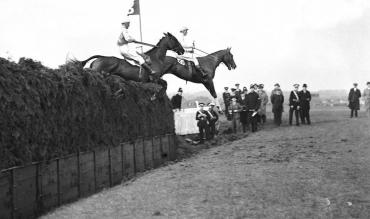The old Grand National fences were the ultimate test but today's race is much changed - with safety and welfare rightly at the heart of the sport. Here, @Mulldog takes us on a trip down memory lane...
For many hardcore Grand National fans and historians the current National fences are a shadow of what they used to be and they believe the Merseyside feature is not the test it once was.
Following BHA safety reviews after both the 2011 and 2012 renewals, a number of changes were made to the Grand National course.
This included some reductions in the size of the fences and the measurement of the drop after them, plus the levelling up of various landing zones.
The start of the race is now 90 yards closer to the first fence, the idea behind this being that the horses needed to be slowed down as they were approaching it at a dangerous rate of knots.
Subsequently this reduced the race to four miles and three-and-a-half furlongs, down from the traditional four-and-a-half miles.
It was also thought that the new measures taken around the start area would help to prevent the horses getting caught up in the starting tape.
Moving the start further away from the crowd has in theory reduces the noise that can sometimes spook the horses and it helps them remain relatively settled.
All of the Grand National fences changed significantly in 2013. The latest fences are still covered over with the Lake District spruce, but the wooden posts have been replaced by an imitation birch made of flexible plastic.
On top of that plastic core, there are fourteen to sixteen inches of loose spruce that the horses can brush through and knock off.
The outward appearance of the Grand National fences remains the same but the horses can basically skim the tops off them now which makes it an altogether different race from what is was previously.
These elements have significantly changed the yearly antepost prices and the whole structuring of the Grand National betting.
Other measures introduced in the 2013 changes were changes in the course irrigation to produce the safest jumping ground possible on a raceday, plus a new bypass and penning area to catch the riderless horses.
Aintree Not Adverse To Change
The Grand National certainly has not been adverse to change over the years, with walls, deep ditches etc all gone from the makeup of the course. All those changes were minor however compared to the sweeping changes to this great race in 2013.
The safety of the runners and riders had always been the main priority of the race organisers, however an ugly statistic of 11 equine fatalities in the race between the years of 2002 and 2011 – including two in both the 2011 and 2012 races – accelerated the momentum to bring about some radical changes to the course set-up.
The following video tells you all you need to know about the changes that were made at Aintree Racecourse and to course safety in 2013. It may even influence your future horse racing online bets.

